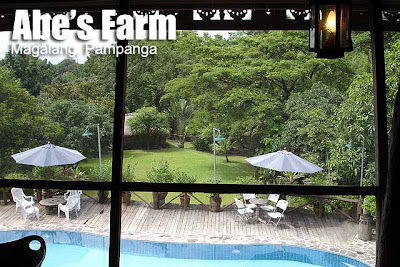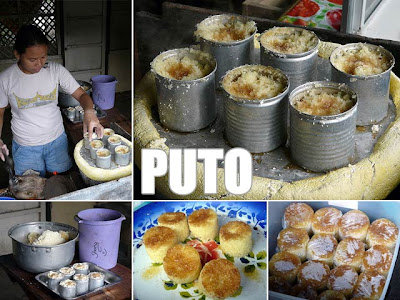 Corregidor Island
Corregidor Island is a day trip from Manila which many people take for granted. This former military fortress city devastated during the Second World War stands as a silent witness the brutalities of war. Today it is a monument to the gallantry of our soldiers.
I made another trip to the island today via
Sun Cruises which leaves the CCP Complex every morning. The first time I went to Corregidor was way back in high school more than ten years ago, also on Sun Cruises. They have day tour packages which include the catamaran ride to and from Corregidor, tram tour around the island and buffet lunch. Although closer to Bataan, the island is part of Cavite City.


Under the Spanish, Corregidor was a fortress, a penal institution, a signal outpost to warn Manila of hostile ships, and a station for Customs inspection. Hence the name
Isla de Corregidor (Island of Correction) from the Spanish
corregir, meaning
to correct. All ships entering Manila Bay were required to stop and have their documents checked and corrected says one account. Another account mentions it got its name because of the correctional facilities.
During the American period, living in Corregidor was the life for any American or Filipino soldier. It had everything one could find in a city including two cinemas and other entertainment, ample lodging for thousands of GIs including the longest barracks in the world at the time it was built, a commisary, and even taxi and tram services!

In fact, it was a prized piece of real estate. Take note! The U.S. Government had spent more than 150 million dollars for the defense installations on the island which is five times the 2009 national budget in nominal terms! Before the war, 7.5 trillion pesos was inconceivable! And sadly, everything was destroyed during the war.
But what remains today is most definitely worth visiting. As soon as we arrived at the dock after that one hour ferry ride, we boarded tram buses which would take us around the island. Each bus goes to a different location so that there are not too many people in each stop. Our bus first went to the
Filipino Heroes Memorial where statues of Manuel L. Quezon and Sergio Osmena stand together with monuments to Filipino guerillas, the Filipino woman, and a several bas relief tableaus of important revolts from the Battle of Mactan to EDSA 1986.

Our next stop was the
Japanese War Memorial which serves as a memorial to the lives lost on the Japanese side. Our guide was really good and I most definitely enjoyed all his stories. But I didn't appreciate him claiming that the statue of
Guan Yin (
Kannon to the Japanese) is a composite of the Virgin Mary and Budhha. Misinformed visitors might just believe that the statue of the Goddess of Mercy is indeed that.

Front there we trooped the the light and sound show at the
Malinta Tunnel, the script of which was written by National Artist Lamberto Avellana. The sculptures were rendered by National Artist Napoleon Abueva. This is an optional part of the tour and you'll have to buy tickets for PHP150. But it is highly-recommended if you want to learn more about Corregidor during World War II.
It took ten years to complete Malinta Tunnel (from 1922 to 1932), which got its name from the abundance
linta (leeches) that plagued the workers that built it. It had been dug through solid rock and offered complete protection from attacks. During the siege of Corregidor, Gen. Douglas MacArthur set up the headquarters of USAFFE inside the tunnel. It was also the seat of Philippine Commonwealth under President Quezon. It was there, on December 30, 1941, that President Quezon and Vice President Osmena were inaugurated into their second terms.
At the end of the show, the Philippine National Anthem is played. Guides should remind visitors of the solemnity of this part of the show. I was irritated that people kept on snapping photos of the Philippine flag while the anthem was playing. They could have done it after.


Anyway, after the Malinta Experience, we proceeded to the
Corregidor Hotel for our buffet lunch. After lunch, we visited three military batteries. A battery in military terms refers to a group of guns placed together in a given area. Among the most popular and most-visited are
Battery Way,
Battery Hearn and
Battery Grubbs.


We also got to drive by the ruins of the
Middleside Barracks, the
Corregidor Hospital and the
Topside Barracks (said to be the longest military barracks in the world at the time it was built) before proceeding to the reconstructed
Spanish Lighthouse.
Another important attraction of Corregidor is the
Pacific War Memorial. It was built on the highest part of Corregidor's west side to honor both Filipino and American soldiers who fought during the Second World War. Completed in 1968, the memorial cost three million dollars to build.

Our last stop before boarding the ferry was
Lorcha Dock from which Gen. MacArthur left for Australia. A statue of MacArthur stands at the dock reminding us of that momentous day in history. And no, he did not utter the famous words
"I shall return!" from there. He said those words in Australia.
The day trip to Corregidor is really convenient. And you'll be back in Manila just in time to savor the famous Manila Bay sunset! But I'm definitely coming back for an overnight trip so that I could explore the many interesting sites outside the usual Corregidor tour.
Sun CruisesCCP Terminal A, CCP Complex
Roxas Boulevard, Manila
(02) 8318140 /(02) 8346857 to 58

 Pampanga longanizas have become so popular because of the many commercial brands available in the market. But would be interesting to investigate the traditional varieties of longaniza in the province. In San Fernando, Everybody's Cafe still makes San Fernando longaniza the same way they did in San Fernando decades ago. The San Fernando longaniza would fall under the hamonado category and is not as sweet as the commercial brands but sweet nonetheless, and garlicky (or mabawang). Notice the reddish color of the longaniza when cooked.
Pampanga longanizas have become so popular because of the many commercial brands available in the market. But would be interesting to investigate the traditional varieties of longaniza in the province. In San Fernando, Everybody's Cafe still makes San Fernando longaniza the same way they did in San Fernando decades ago. The San Fernando longaniza would fall under the hamonado category and is not as sweet as the commercial brands but sweet nonetheless, and garlicky (or mabawang). Notice the reddish color of the longaniza when cooked.

















































